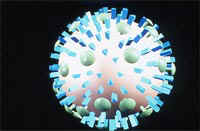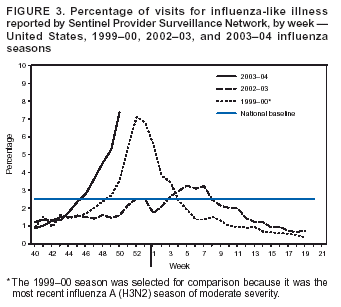Michael Fumento
Factual · Powerful · Original · Iconoclastic
An Inoculation against Flu Panic
December 22, 2003 · Michael Fumento · Scripps Howard News Service · DiseaseThere’s no cause for panic over the flu. But this IS proving to be an unusual flu season for several reasons, and any disease that kills on average 36,000 Americans annually is serious stuff. Here’s what you should know.

People are panicking because the season started earlier), because of the highly-publicized flu deaths of several children, and because the media are dusting off and reprinting their stories about the great flu pandemic of 1918-1919. Further, the Centers for Disease Control and Prevention arbitrarily decided to label this season an “epidemic.”
But “epidemic” means a higher-than-usual
rate, while cases are currently being reported at merely an average
rate. There’s also no evidence that this year’s primary strain,
A/Fujian/411/2002, is any more harmful or easier to transmit than
last year’s.
Unfortunately, there is a shortage of inoculations and manufacturers can’t
make more before the season ends. BUT it can still be obtained from some
distributors. Check with your local
health department.
There’s also a plentiful supply of a newly-approved
nasal vaccine called FluMist.
While not everyone is eligible to receive it, for most FluMist provides
quick and painless immunity.
Now here’s another “unfortunately.” Each vaccine, whether
administered by needle or nose, can contain only three strains of the
virus. Every year at the end of one flu season the World
Health Organization and other health agencies make an educated guess
as to which strains are most likely to be prevalent in the next. This
year, with the primary strain, they
guessed wrong.
On the other hand, the strains are related. So while you won’t get
the protection you got from last year’s inoculation, you will get
some. It’s like wearing a Kevlar vest as opposed to ceramic armor;
if you were patrolling Baghdad and couldn’t get the ceramic, you
wouldn’t turn down the vest. Likewise, don’t reject this year’s
vaccine.
I was vaccinated and even as I was writing this column contracted the
flu. But the symptoms were mild and gone within a day.
But you should take extra
precautions as well. First, if you get it don’t spread it. Skip
the macho practice of showing up at the office coughing and sneezing.
Probably the only work you’re going to get done anyway is giving
free samples of germs to other workers, who will then spread them to yet
other workers and their family and friends.
As to defensive measures, avoid persons who appear infected, wash your
hands several times each day, and avoid touching your eyes, nose or mouth.
If you do become ill, there are several
anti-viral medicines that can slightly shorten the duration of the
disease if you get to the doctor right away.
Also consider pinning this column to the office bulletin board. It may
prevent some flu transmissions and in any case should help increase my
reader base.

As the CDC’s own graph shows, the flu this year is exactly tracking that of 1999-2000, at least as of mid-December. Flu may become epidemic, but it’s not yet.
Now for the fun part; is there anybody upon whom we can pin blame?
With today’s technology, no. Because it takes so long to incubate viruses for the vaccine in the traditional medium of chicken eggs, strains must be identified much earlier than we would like. As for possibly not providing enough doses, last year the vaccine manufacturers had to throw out 12 million. Flu vaccines are already low-profit drugs, and the pharmaceutical companies still in the business can hardly afford such waste.
But tomorrow’s technology offers real hope. Companies are working on growing the virus in mammalian cell cultures, a process that could slice months off the time required to grow the vaccine. This could both give health officials far leeway to determine the proper strains and even allow growing a whole new batch after the season has begun.
As for now, that the wrong strain was included in the vaccine may still portend a harsher season than normal, although there seems little possibility of repeating such previous epidemics such as the Hong Kong flu of 1968-69. Children may be more susceptible to this strain than usual, but happily few children die from the disease in any year.
Still, this should be a sobering occasion. For all the hysteria over SARS (including such assertions as “"SARS Could Eventually Kill Millions" and headlines such as "SARS Outbreak Could Overwhelm U.S. Health System"), it killed fewer than 1,000 worldwide )and zero in the U.S. The writers of such doomsday pieces and the pundits who gave me hell for saying SARS was a mere sniffle compared to the flu are now wearing beards and hiding in spider holes.
Again we see the case for placing priorities over panic.
